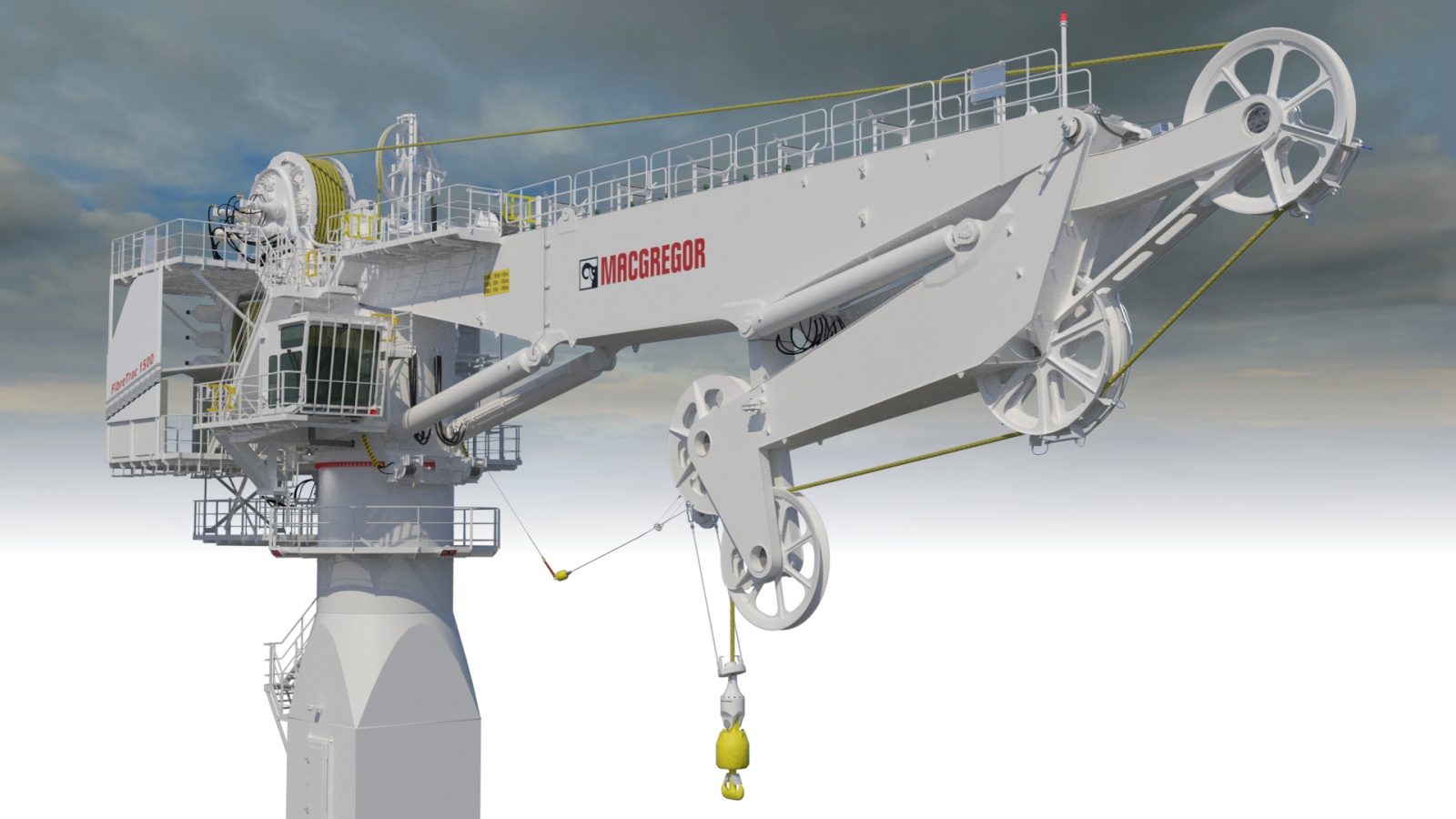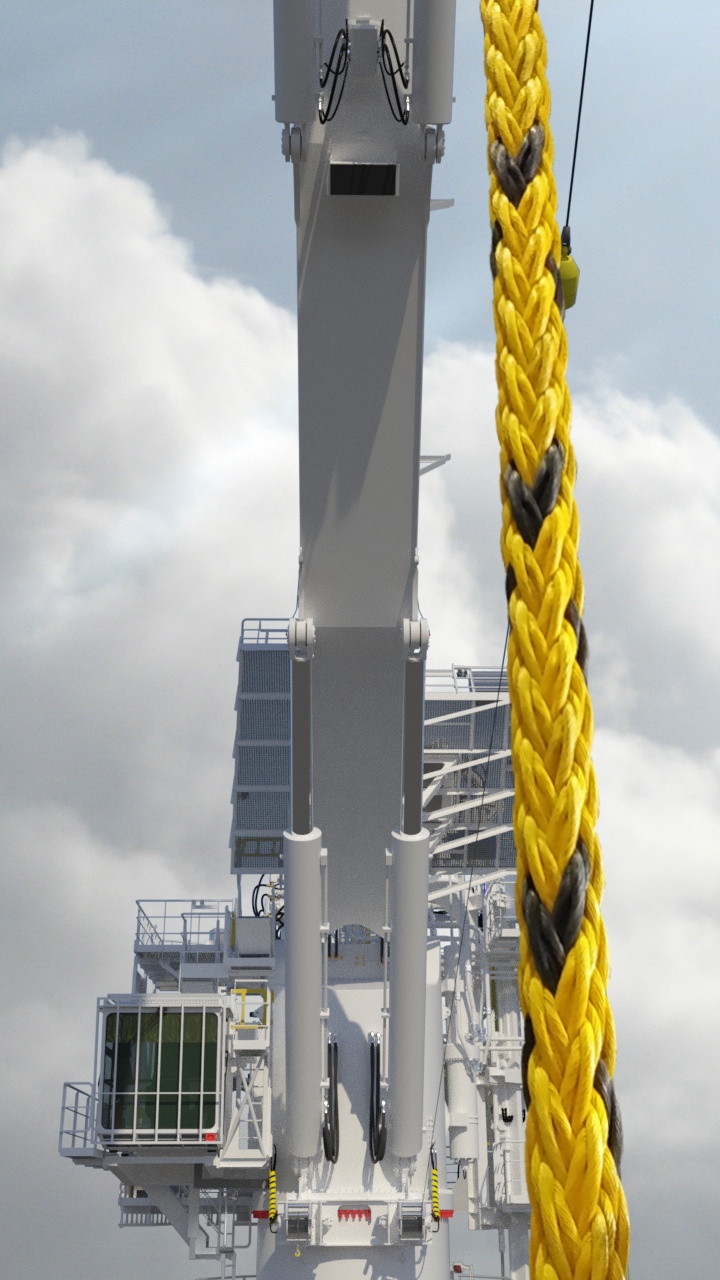Fibre-rope crane construction enters final stages
26 Aug 2018 Reading time calculated text
With key components being tested and the crane systematically assembled, the market will soon be able to see all the benefits that a MacGregor fibre-rope offshore crane can offer.

MacGregor’s first fibre-rope offshore crane, known as FibreTrac, is entering its final stages of construction, ready for introduction to the market later in the year. Its deepwater capstan from Parkburn has been undergoing successful initial tests in the UK prior to delivery to MacGregor’s Kristiansand facility in Norway, where the crane is being assembled.
MacGregor launched its fibre-rope crane range in 2016, developed through a cooperation agreement combining MacGregor’s proven offshore crane technology with the fibre-rope tensioning technology perfected by UK company, Parkburn Precision Handling Systems.
Prepare for a new standard
“We are so confident in the technology and keen to demonstrate the crane’s capabilities, that last year we entered into a programme to build, certify and validate it,” says Ingvar Apeland, Vice President, Business Development, Advanced Offshore Solutions, MacGregor. “I believe that it will be one of the world’s most advanced fibre-rope knuckle-boom cranes that the market has seen.”
The FibreTrac crane has a MacGregor storage winch, capable of accommodating 4,000m of 88mm rope. It is designed and being built to DNV GL regulations. “Compliance with DNV GL’s strict rules should provide end users with even greater confidence in the long-term use of this technology for this purpose,” he notes.
Once delivered, FibreTrac will have a 150-tonne safe working load (SWL) capacity and will feature an advanced rope monitoring and management system that maximises rope lifespan and provides clear lift line status information for the operator at all times.
The crane will be controlled with state-of-the-art technology that has the added advantage of providing real-time data feedback to onshore locations using the MacGregor ‘OnWatch Scout’ feature.
For owners wishing to leverage the technology for their existing cranes or stand-alone winch systems, MacGregor’s fibre rope solution can be retrofitted and will be available with both hydraulic and electric drive options.
Simple science, big benefits
Fibre rope weighs virtually nothing in water, so regardless of the length of rope paid out, it does not add anything to the load experienced by the crane. This is in complete contrast to wire rope, where the ever-increasing weight of wire paid out limits the load permissible in relation to depth.
Effectively, a fibre-rope crane with a 150-tonne SWL capacity is able to replace a 250-tonne SWL capacity wire-rope crane when lifting loads at depths of 3,000m and it can continue to lift loads at even greater depths.
By employing fibre-rope technology, a crane is able to capitalise on its full lifting capacity at practically any depth, so a smaller crane and vessel can be used for more assignments, and owners are able to bid on a wider range of contracts; this is one of its greatest commercial advantages.